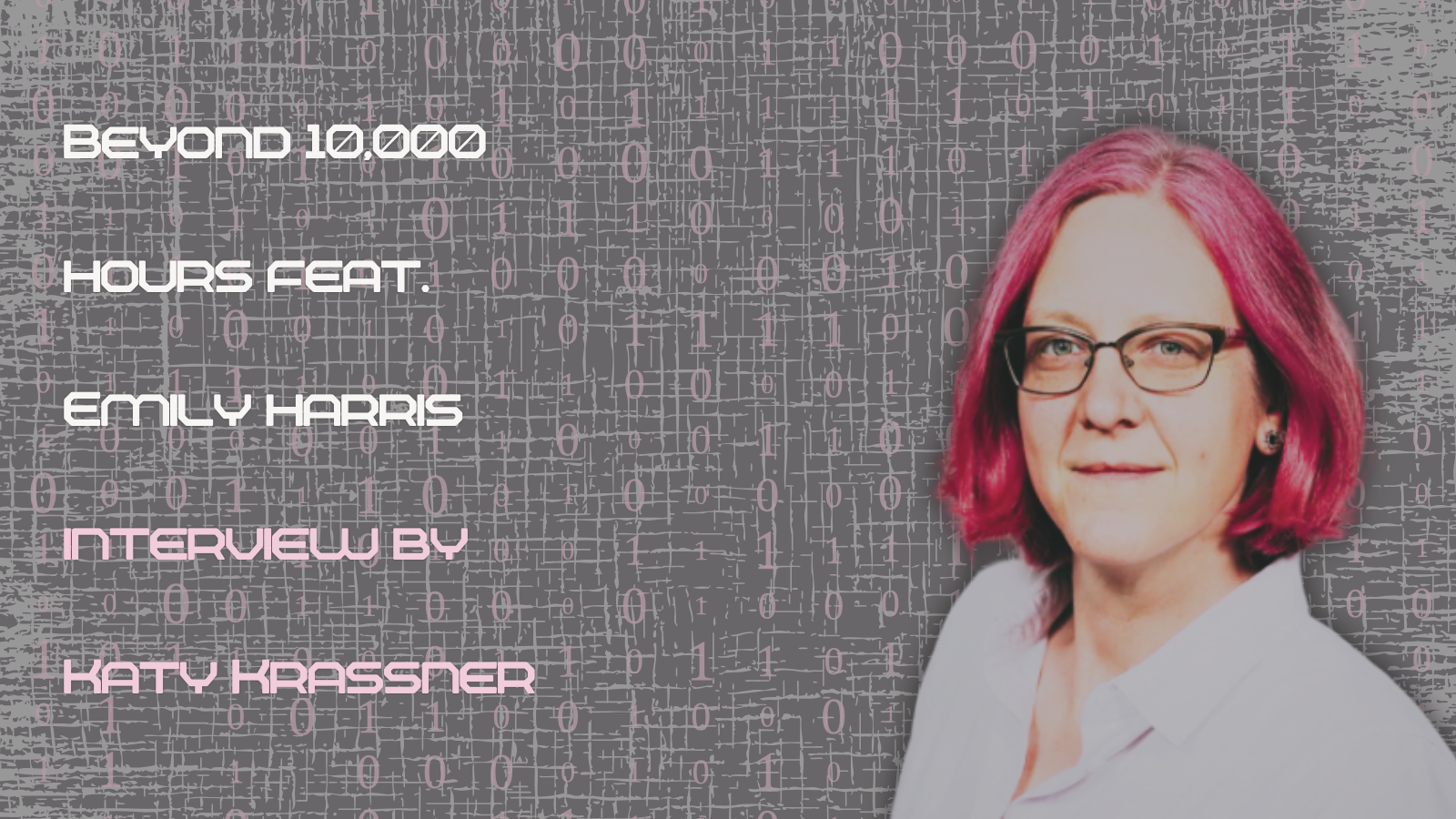BEYOND 10,000 HOURS
Emily Harris is an experienced IT professional who started her career as a desktop technician and now spends her time as an Information Security leader (cyber security). How is this relevant to music? For many reasons, but also because Emily used her smarts early in her career to launch some very cool things for musicians. After all, she studied historical musicology in college, a major that deals with music of all types and from all times and places. With regard to the internet, she was in the right place, and the right time. In the current musical landscape you may have wondered – is social media enough these days?! It’s important yes, but “don’t substitute social media in place of a website”. Let’s hear it from an expert!
“And here we are back where it all began”
I was a very arty and creative kid. I played classical piano from age 5 all the way through high school. I was in the orchestra and in private ensembles, so I felt immersed in music. My house was full of music, and my parents owned a lot of vinyl. They would buy my sister and I all kinds of music. Once I started buying my own music, my taste varied to REM, Dead Milkmen, the Sex Pistols. I didn’t live far from Boston and as I got older, I started to go to concerts: David Bowie when I was 13, Red Hot Chili Peppers, REM, Duran Duran, Siouxsie and the Banshees.
“I plug you in”
My college degree was in historical musicology, and my intent was to become a college professor and teach music. But life had other plans, and I got a job at my university managing the computer lab. I was good with technology and started to express my creativity by learning how to use computers for art and music as a hobby.
A job took me to Florida, and I started spending a lot of time on a website called Live365.com, which was pretty much the first music streaming site. This was a brand-new concept at the time – you could take your CDs and rip MP3s, so I started to play around on there and became an internet DJ, creating my own playlists and mixes. I understood the technology before most people and taught myself how to manipulate the digital tools that were available then. It was around that time that I started to wonder if music artists would be interested in this technology for their websites.
“Trust the Process”
As I was teaching myself this new technology, the Digital Millennial Copyright Act was launched, which was legislation put in place to stop people from doing what I was doing – ripping CDs and putting them online without paying royalties to the artist. Still, throwing caution to the wind, I reached out to John Taylor, the bass player from Duran Duran, because I heard he launched his own website and record label – meaning he OWNED his music. I asked if he wanted to develop a radio station on Live365 to promote his music and he did. Together we established a radio station that played the music he owned as well as other artists that had inspired him. The station streamed on Live365.com but also on his website via an embedded player. We had a formal agreement with Live365 that allowed me to continue with my cool new hobby.
“I’ll cross that bridge when I find it”
Since the late 90s, early 2000s, there has been a lot of change in what artist websites look like. Initially, you had a website to give people the latest information on the artist/band they were interested in. Later, labels started to throw in ‘bells in whistles’ like an online jukebox, puzzles, interactive games, quizzes, flash technology…the more complex, the better. It turned out, people weren’t so into that. It seems like we’ve come full circle: the goal is back to giving people the information they need while driving them to buy albums, listen to the music, buy concert tickets. People want to easily find the info they need and then move on.
“Too many things, too much to know”
Some advice I’d offer to musicians, producers, engineers – whoever is interested in developing their own websites: It’s very obvious when someone who doesn’t have professional web design experience creates a website. It is worth investing in a professional. Yes, it does cost money, but if you want to promote your brand, the look of the website must be professional. A website design that doesn’t translate well from a computer to an iPad or to an android or an iPhone isn’t one that will get many return visitors.
Don’t substitute social media in place of a website. Social media presents things in a limited fashion. Websites give you an opportunity to put everything in one place, so people don’t have to scroll through several posts to find it. The website is the primary place to store your creativity, and your social media is where you announce things.
Another piece of advice is that artists should understand that music can be presented visually on a webpage. To be a success, a website should be visually appealing and match the theme of your album. Think back to the 1980s and 1990s – cover art helped to sell music. The connection between music and artwork is an important one. Pair your music promotion with rich visuals.
